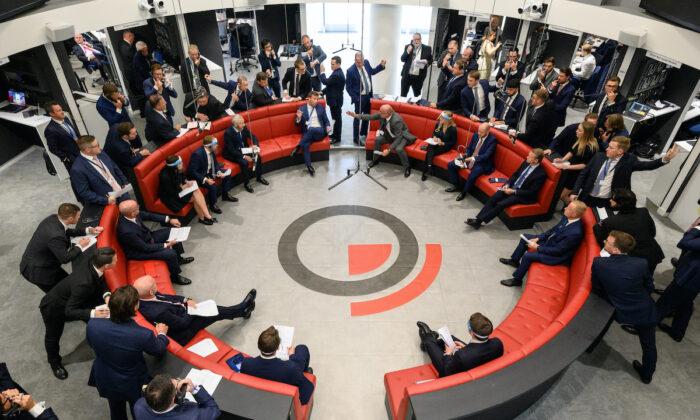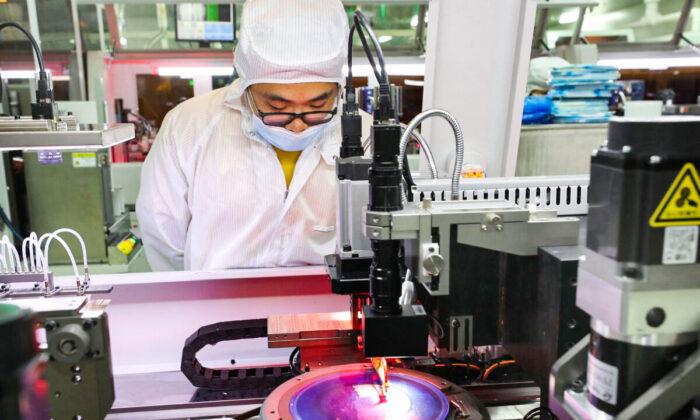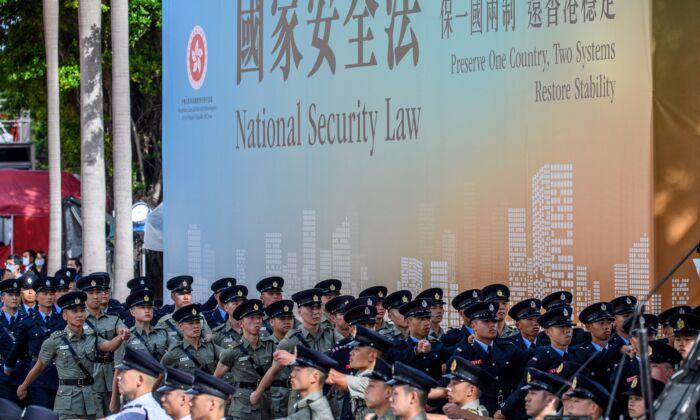China is deploying record numbers of troops on the India-China border, and frequently changing the commander of the Western Battle Zone that encompasses the border. Indian army chief general Manoj Mukund Naravane said India is “quite well poised” to meet any aggression from China.
Naravane told Free Press Kashmir (FPK) on Oct.2, “Chinese [troops] have deployed in considerable numbers all across Eastern Ladakh and Northern Front right up to our Eastern command.
“Definitely, there has been an increase in their deployment in the forward areas,” he said.
In response, the Indian side is also increasing its troops, Naravane told Indiatoday.
According to Naravane, India has deployed the first K9-Vajra self-propelled howitzer in Ladakh, which is capable of attacking enemy targets at a distance of about 30 miles. “These guns can also work in high-altitude areas, field trials were extremely successful. We have now added an entire regiment, this will be really helpful,” reported FPK.
In addition to the K9-Vajar howitzer, the Indian army successfully test-fired the M777 ultra-light howitzer and plans to deploy this howitzer mainly along the India-China border, reported The Times of India on Sept.14.
“We are strong, we are ready to face any situation,” the army chief said in an exclusive interview with India Today TV.
Naravane said that the Indian side is monitoring closely the possibility of a communist incursion, but he hopes to find a long-term solution to the border standoff through dialogue between both sides, reported the FPK article.China and India will hold the 13th round of talks in the second week of October.
India-China Border Confrontation
Naravane said that for the last six months, the situation has been “quite normal, reported FPK”However, the Wall Street Journal reported as early as July 2 that China and India had each sent tens of thousands of soldiers and deployed advanced military equipment to the Ladakh region in the largest scale in decades, and that the number of Chinese Communist troops had increased from about 15,000 in July 2020 to at least 50,000.
In August, more than 100 Chinese army soldiers crossed the border in Barahoti, North Akhand, damaged some Indian infrastructure, including a bridge, and then withdrew, reported The Economic Times of India on Sept.28.
Chinese Communist Party (CCP) Foreign Ministry spokesperson Hua Chunying accused India of pursuing a long-standing “forward policy” and illegally encroaching on Chinese territory, “This is the root of tensions along the Sino-Indian border,” Hua said at a Sept. 29 press conference.
Indian External Affairs Ministry Spokesperson Arindam Bagchi countered that China’s allegations have “no basis in facts,” saying China continues to deploy a large number of troops and armaments in the border areas, and Indian forces had to make appropriate counter deployments, reported The Hindu.
China’s Western Battle Zone
The Chinese communist regime reclassified seven military regions in mainland China into five battle zones, putting the Sino-Indian border under the control of the Western Battle Zone. The Western Zone merges the former Chengdu military region and Lanzhou military region (excluding Yunnan Province and Guizhou Province), commanding the armed forces of seven provinces and municipalities as Gansu, Ningxia, Qinghai, Xinjiang, Sichuan, Tibet, and Chongqing.Military commentator Zhou Tian reported in the Chinese edition of The Epoch Times on Oct. 2 that the Western Zone is large, and its management, mixed with many political elements, is chaotic; Xi Jinping seems least reassuring; and the commander of the Western Battle Zone has been appointed and dismissed three times so far this year.
In Dec. 2020, the former deputy commander of the Central Battle Zone Zhang Xudong replaced the former commander of the Western Zone Zhao Zongqi; six months later, Zhang was succeeded by Xu Qiling, the former army commander in the Western Zone; but when Xi Jinping awarded titles for new generals on Sept. 6, the commander of the Western Zone was replaced by Wang Haijiang, the former commander of the Xinjiang military region, reported Radio Free Asia.
Wang was the deputy commander of the Tibetan military region from 2016 to 2020, where he handled the 2017 China-India Doklam standoff.
In addition, Wang participated in the China-Vietnam border war in 1979 and had “real-war experience,” said Radio Free Asia.
CCP Military Power
North American-based military expert Xia Luoshan told The Epoch Times that the China-India border confrontation is likely to be limited to local conflicts on the ground, and the air force is unlikely to intervene. If a ground conflict occurs, the CCP army might be at a disadvantage due to geographical conditions and equipment restrictions.“Even if an air battle does occur, the Chinese side would not have an advantage,” Xia said, “because in terms of the strength of the air forces of both sides, although the Chinese air force has a large number of aircraft, most of them are third-generation fighters.
“The Indian air force has a relative advantage in geographical location.”
Considering the CCP is creating an unprecedented expansion in the Taiwan Strait and the South China Sea, if its air force intervenes in the battle with India, it would turn into a full-scale war; but the CCP does not have the capability to wage war in both directions at the same time, according to Xia.





